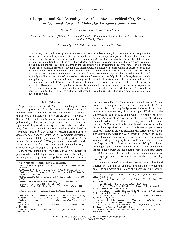摘要
A coarse-grained molecular dynamics simulation has been carried out to study the adsorption and self-organization for a model surfactant/supercritical CO(2) system confined in the slit-shape nanopores with amorphous silica-like surfaces. The solid surfaces were designed to be CO(2)-philic and CO(2)-phobic, respectively. For the CO(2)-philic surface, obviously surface adsorption is observed for the surfactant molecules. The various energy profiles were used to monitor the lengthy dynamics process of the adsorption and self-assembly for surfactant micelles or monomers in the confined spaces. The equilibrium properties, including the morphologies and micelle-size distributions of absorbed surfactants, were evaluated based on the equilibrium trajectory data. The interaction between the surfactant and the surface produces an obvious effect on the dynamics rate of surfactant adsorption and aggregation, as well as the final self-assembly equilibrium structures of the adsorbed surfactants. However, for the CO(2)-phobic surfaces, there are scarcely adsorption layers of surfactant molecules, meaning that the CO(2)-phobic surface repels the surfactant molecules. It seems to conclude that the CO(2) solvent depletion near the interfaces determines the surface repellence to the surfactant molecules. The effect of the CO(2)-phobic surface confinement on the surfactant micelle structure in the supercritical CO(2) has also been discussed. In summary, this study on the microscopic behaviors of surfactant/Sc-CO(2) in confined pores will help to shed light on the surfactant self-assembly from the Sc-CO(2) fluid phase onto solid surfaces and nanoporous media.
- 出版日期2007-8-28
- 单位南京工业大学
